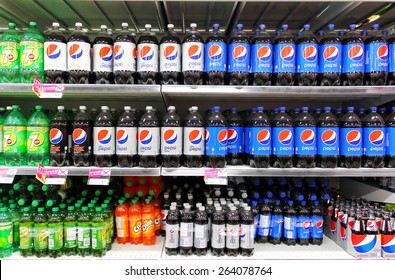
Why brands should go digital audio in 2021
In a year of massive disruption, here’s a positive story: Digital audio is thriving and is projected for growth in 2021. While the COVID-19 pandemic has altered Americans’ routines, they’re accessing digital audio at unprecedented levels. Streaming audio delivers personalized content, intimate listening experiences, and control – on any device, at any time. In a chaotic time for consumers, that’s a salve. As listening surges, more brands want in.
Users are listening to more music, spoken word and podcasts. Since the beginning of the year, the average daily audio streaming hours have increased 32 percent, according to Pandora’s new 2021 “Definite Guide to Audio”, a roadmap for brands on media usage and trends, particularly audio. In a first, digital audio now commands more listening time than traditional AM/FM radio, accounting for 53 percent of all daily audio consumption.
Pandora listeners say digital audio is a mood enhancer, welcome distraction, and a way to find companionship.
“Streaming is highly personalized, and that’s something that will only grow,” said Crystal Park, Pandora’s vice president of industry marketing. “People lost their commutes, gym routines and habits, but consumers are evolving and adapting and creating new routines.”
At the same time, advertisers are weathering a turbulent year. Last spring, when most Americans sheltered in place, advertisers pivoted to inspirational messaging, often focused on how they were supporting employees and communities. As protests for racial justice and police reform erupted nationwide, marketers again reworked ads to show their solidarity and commitment. Now, as the pandemic rages on and the holiday season approaches, advertisers are once again rethinking their positioning.
Due to COVID-19, Americans are consuming 87 percent more media, which means there are plenty of available ears and eyes. Young consumers are flocking to digital audio and video. In fact, nine out of ten are streaming both audio and video content, showing the opportunity for advertisers to run campaigns across all devices, e.g., tune-in messages via audio.
Digital audio is an effective and brand safe-environment. Users are engaged and active, and they’re responsive to appropriate brand messages. Importantly, marketers know who they’re reaching and when. Pandora, for example, can target by context, mood, behaviour and content preferences. After a campaign runs, its data analytics help improve efficiency and return on investment.
“The data we have, especially our logged-in user data, is critical and highly useful for brands that want to tap into streaming,” Park said.
At a time when consumers’ feel stressed and fatigued, what brands say matters.
Park said ads should be compassionate, relevant and thoughtful. That’s what resonates with Pandora listeners. The Pandora report notes that 53 percent of listeners want to hear ads that are informative or relevant to products and services, while 50 percent said they prefer positive, inspirational ads. Also, 53 percent are more likely to purchase from a brand that shares their social or political beliefs.
“Showing your brand in the context of what folks are going through day-to-day is so important,” Park said. “Also, brands should offer guidance and solutions that are additive to their lives, not making it more complex and chaotic.”
To address such concerns, three out of four brands have retooled their advertising assets this year, including 53 percent that have increased messaging about their company’s missions, according to the IAB.
While ad spending on legacy media is expected to dive 30 percent this year, digital ad spend is projected to grow six percent. That’s a modest gain, but, in a year when total ad spending is forecast to decline eight percent, any growth is notable.
Digital audio wants to grow its share of that spending. “Audio is a medium that can deliver a brand value message in an intimate environment; We are literally in your ear,” Park said.
To succeed in audio, Pandora advises brands to incorporate sonic branding, which is an easily recognizable audio signature or sound, such as a familiar voice or music that is deployed across digital, broadcast and social campaigns. When it’s done well, listeners immediately identify the sound and the brand, building awareness and affinity. For example, Pandora noted, when consumers hear the lyrics, “Like a good neighbor”, they instinctively fill in, “State Farm is there,” in a nod to the insurance agency’s omnipresent jingle. The iconic NBC three-tone audio brand is another example.
While some advertisers are warming to sonic branding, many still train their resources on visual and video creative. Park recommends that audio and visual strategies be simultaneously developed. “sonic identity has to align with the visual identity. They have to be built in tandem,” she said. “Sonic identity shouldn’t be an afterthought.”
As we enter 2021, an audio strategy is an absolute “must” for brands. With the recent addition of Stitcher, Pandora’s portfolio of brands reaches a combined 150M monthly users. While that kind of scale is critical, Park said industry metrics like audibility and standardized measurement – especially in podcasts – will create efficiencies throughout the entire audio ecosystem.




Comment
No comments found.